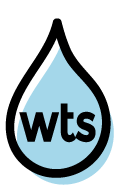Perhaps you’ve heard the word tossed out and wondered: What is a lexicon? In essence, a lexicon is an individual’s dictionary. It is all of the words that you know presently. No two lexicons are identical, or at least the odds of that happening are infinitesimally small, haha!
What kinds of words are included in a lexicon?
There are two types of words a lexicon is composed of.
The first one is real words. These can be regular words, medical words, technological words, words that are specific to your field, and so on. This category includes words from multiple languages. So for those of you who speak some “Spanglish” or another language hybrid, that means that every single one of those words is incorporated into your lexicon. For those of you who are less fluent in multiple languages but have managed to snag various words from an array of languages (e.g., namaste, vaca, bellissima, carpe diem, zut!), these all count as part of your lexicon as well.
The second type is nonreal, or nonsensical, words. These are words that are made-up. They don’t hold any meaning for anybody else on the planet except for you and maybe a few other people who are in on the joke. For instance, the word “kaboomies” means something in my household but likely doesn’t mean anything to you. Any of those silly words that you and your spouse/partner say to one another or those words that are inside jokes between you and your friends or family, those silly words are the ones that fall in this category.
How many words does an average adult have in his/her lexicon?
The research varies, but somewhere between 20-42+k! There are a couple of articles (1) and (2) which walk you through the research behind how these numbers came to be. It is quite impressive if you stop and think about it. However, remember that an adult’s vocabulary is founded on their experiences as young children. We are here to learn about young children and how to bolster their lexicons.
Number of Words in a Toddler’s Lexicon
| Age (years) | # of Words Spoken |
| 1 | 4 |
| 2 | 50 |
| 3 | 200 |
These are just approximations of how many words a child should say during the beginning years of life. This chart tells less than half the story because it represents only what the child says. Assuming the child uses their words correctly, then he indeed knows at least those words and they are in his lexicon.
Additionally, his lexicon is composed of words that he can understand. This makes the number of words in your child’s lexicon much higher than what is reflected above. A good way to gauge the number of additional nouns in his vocabulary is to ask him to identify (gaze at, reach for, or point to) various objects.
Let’s Water the Sponge!
Here are my top three tips for increasing the number of words in your toddler’s lexicon:
1.) Hands-on Activities and Playtime. Children love nothing more in the world than to have some one-on-one time with their parents or educators! Even just 5 minutes will go a long way. Think of an activity that your child might like to participate in:
- Arts & Crafts
- Kinetic Sand
- Making Play Dough
- Playing outside
- Participating in a science experiment
Once you select your preferred activity, think about the vocabulary words you want to reinforce with your child. Do you want to work on general nouns? Action words? Prepositions (location words such as “above”/”below”)? Try to incorporate those words into your activity.
When you play with your child – be it pretend play, dress-up or cars – it is important to get down on his or her level when you play. Sit on the floor or in a child-sized chair. Again, think about what vocabulary words you want to teach your child. If he or she is old enough to try to repeat them back to you then have him say them after you do so that you know the word is being stored in his memory correctly.*
*Side story: I am completely guilty of thinking that some mispronunciations are too cute to correct! My oldest says “sour patch cream” for sour cream right now and it’s hilarious! He is mixing the words from Sour Patch Kids with sour cream. I’ll correct him eventually, but for now I’ll just get it on video so we can laugh at it later!
2.) Reading. Reading to your child will improve his or her vocabulary, period. Just reading the words on the page will expose him to words and concepts that he might not have been otherwise exposed to throughout the day or week.
A great way to read to your child is to be an active participant. Ask her questions about what is happening or what she thinks will happen next. Ask her to point to certain objects or have her tell you what she sees. It’s an opportunity not only to work on how she understands language but also how she expresses language.
3.) Focus on a Handful of Words Each Week. Think about the different concepts you want to teach your child. Colors? Numbers? Shapes? Letters? Action words? Opposites? Rhyming words?
Pick a topic that you think your child understands and might pique her interest, then let your creative side shine! Pick books and activities that highlight those topics. If you feel bold then you can look for printouts on various websites that promote the topic you’ve selected (Pinterest and teacherspayteachers are some common ones).
I hope you enjoyed this post about lexicons! Remember to comment, like, and share!


